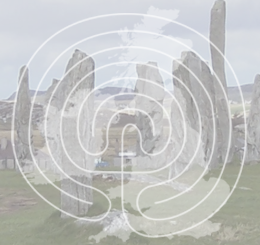Rawthey Bridge Stone Circle
Stones used in the construction of the 1822 Rawthey Bridge over which the A683 passes were plundered from a stone circle described in The History and Antiquities of the Counties of Westmorland and Cumberland, 1777 by J Nicolson & R Burn. “A circle of large stones, supposed to be a monument of druid worship”. According to Rev. W Nicholls, in his The History and Traditions of Ravenstonedale, 1877, the stone circle had been destroyed so that the stones could be used in the construction of the bridge. “Fifty years ago there was a circle of stones on the high road leading from Kirkby Stephen to Sedbergh, near Rawthey Bridge, supposed to be a monument of Druid worship. These stones, I have been informed by Mr. William Alderson of Brigg, were blocks of limestone, about three feet high, and were inconsiderably removed for the purpose of helping to build the abutment on the Ravenstonedale side of the present bridge which spans the Rawthey, and bears (the) date 1822. The holes in which the stones stood are, however, yet visible, although overgrown with grass. Collectively they form a circle.”
 The 1822 bridge is 80 yards below an older long gone Tudor bridge which it replaced. During the late sixteenth century the original timber bridge had been “utterly ruinated and carried away by the greatnesse of ye floods” and “40 persons have within a small space been ether drowned” (according to the court of Quarter Sessions making a report in 1614). Queen Elizabeth I commissioned the rebuilding of the Rawthey Bridge on 20 March 1584. On 12 September 1586 the Queen wrote expressing her marvel at the negligence of the execution of her orders concerning the rebuilding of the Rawthey Bridge and orders those responsible to meet in Sedbergh in early October. The bridge was rebuilt in stone and first appeared in a list of bridges in 1679.
The 1822 bridge is 80 yards below an older long gone Tudor bridge which it replaced. During the late sixteenth century the original timber bridge had been “utterly ruinated and carried away by the greatnesse of ye floods” and “40 persons have within a small space been ether drowned” (according to the court of Quarter Sessions making a report in 1614). Queen Elizabeth I commissioned the rebuilding of the Rawthey Bridge on 20 March 1584. On 12 September 1586 the Queen wrote expressing her marvel at the negligence of the execution of her orders concerning the rebuilding of the Rawthey Bridge and orders those responsible to meet in Sedbergh in early October. The bridge was rebuilt in stone and first appeared in a list of bridges in 1679.




Recent Comments